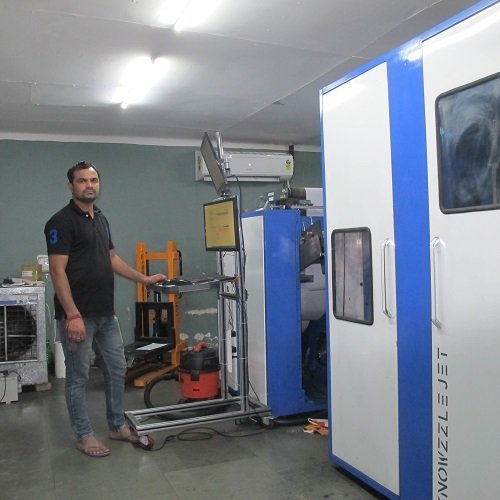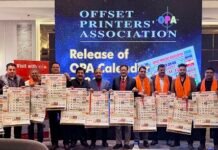
Indian commercial printers visited China Print in Beijing in large numbers earlier this year, and many were seeking web-fed inkjet presses. Even those printers who had already purchased a Chinese-made inkjet book press were looking for other manufacturers, just as perhaps more than two dozen Chinese companies were searching for more distributors in India.
Some of the earlier Indian distributors have stepped back, preferring to stay out of a market that they see in danger of collapsing with too many suppliers and hypercompetitive pricing of machines and ink supplies, not to mention servicing issues that are bound to arise. Other distributors of Chinese machines that were in the higher price range have now found alternative manufacturers in the lower price bands to remain competitive.
All of this happens with the collapse of Landa Digital in the background. In this sense, the Indian buyers, even those who ponied up US$10,000 in the early days to be in line for a Landa press when and if it was available for our market, have wisely stayed out of that early adopter play. They have maintained the tradition of Indian printers of only buying Version 2 or 3 of an innovative technology when it is proven and the price becomes reasonable.
Thus, in this area, the Eastern or Asian manufacturing narrative is gaining ground, with Japanese Miyakoshi webfed inkjets establishing themselves at the quality end of the webfed color inkjet book market. Apart from the press installed by Sap Printing in Mumbai last year, Repro India has already installed the second Miyakoshi webfed inkjet in the country, at its Manesar plant. Another color press or possibly two may be installed by March-end.
Japanese sheetfed inkjets are also in the book market, with Canon having made some inroads in past years with the VarioPrint I series. With the recent incorporation of a suction feeder, it may sell a couple of VarioPrint I production presses in the current year in this market. TechNova, which showed the Kyocera sheetfed inkjet at Printpack in February, may also sell a couple of machines this year to Indian book printers.
As far as web-fed inkjets, there is a tussle between the Indian manufacturers and the Chinese. This market remains 70% monochrome, with the balance being full-color duplex presses. Thus far, Monotech India has built up this market with domestic sales and exports of its knowzzlejets and has recently installed a pair of presses, and it will likely install another half a dozen by the end of the financial year. It is learnt that another pair of Indian manufacturers are also doing their best to enter this competitive market, and they may see their initial sales this year.
All the Indian distributors of the Chinese webfed inkjets have large sales funnels that they expect to result in sales and installations in the third and fourth quarters of the financial year. Among these, Atexco is expected to sell as many as 8 to 10 presses, Founders another two or three, E-jet, a new entrant, perhaps another two or three presses, and Oyang, which has installed one press, perhaps one or two more.
The total installs of web-fed inkjet book presses in the financial year are likely to be somewhere between 20 and 25 presses, and again, to be predominantly monochrome duplex machines. However, the danger is that this market will collapse because of the hypercompetition in press, servicing, and consumable prices.
Drum and toner digital sees bottom-line erosion
The drum and toner digital presses predominantly from the Japanese manufacturers, such as Konica Minolta, Ricoh, Canon, and Fujifilm, and the US-owned Xerox, will possibly match their top lines of the previous year, with about 2,400 machines, including what are called “light production machines.” We would consider about 1,800 of these as production presses, but one cannot discount the entry-level light production market.
Thus, the drum and toner market has flattened and become hypercompetitive with price erosion on the capital expenditure side and servicing, which includes the ‘click charge” for consumables. Konica Minolta will again dominate this market with Ricoh and Canon vying for second and third place, and Fujifilm and Xerox bringing up the rear. Sharp has also entered the Indian market and is likely to enjoy some sales as it builds up its base in the production color and monochrome markets.
Apart from the flat sales of new digital presses, sources tell us that the steep erosion in servicing consumables has reduced the annual growth of this revenue stream, which has shrunk from double digits to single-digit growth. Thus, while digital is growing in commercial and packaging print, it does not compare with the growth of multicolor offset press sales in India – a category in which anywhere from 85 to 100 multicolor presses will be installed in the current year.
















